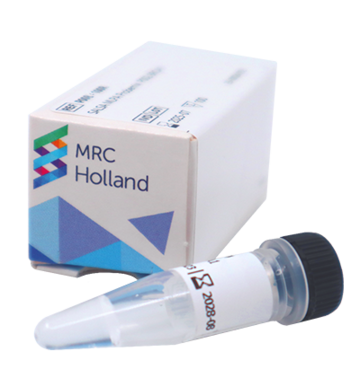Multiple endocrine neoplasia type 1 (MEN1) is predominantly characterized by the occurrence of primary hyperparathyroidism (PHPT), which occurs in 95-100% of patients; pancreatic neuroendocrine tumours, which occur in 40-75% of patients; and pituitary adenoma, which is found in 30-50% of patients. Most tumours are non-metastasizing, but many can cause striking and serious clinical effects due to the increased secretion of hormones. It is estimated that in the general population 1 to 10 in 100.000 individuals develop MEN1 during their lifetime. Nine out of ten patients diagnosed with MEN1 have the familial form. MEN1 shows dominant autosomal inheritance and the penetrance is >95% by age 40 for confirmed pathogenic mutations. The mean age of death of MEN1 patients is between 50 and 55 years. The single gene associated with MEN1 syndrome is MEN1, which encodes the menin protein. Heterozygous MEN1 pathogenic variants are found in ~90% of familial MEN1 syndrome patients and in ~65% of sporadic cases. Loss of heterozygosity (LOH) of MEN1 is observed in >90% MEN1 tumours suggesting that MEN1 acts as a tumour suppressor gene, in line with the Knudson 2-hit hypothesis for tumorigenesis. Besides point mutations, several deletions involving one or more complete exons in the MEN1 gene have been described (Carroll 2013, Concolino et al. 2016, Lemos and Thakker 2008, Romanet et al. 2019, Thakker 2014), including a pathogenic deletion of just the 5’-UTR (Kooblall et al. 2020).
Pituitary adenomas (PAs) occur with a frequency of ~1 in 1000 in the general population. Most cases are sporadic, but approximately 5% occurs as a familial cancer. The AIP gene encodes aryl hydrocarbon receptor-interacting protein (AIP), a tumour suppressor that is involved in the control of cell proliferation and differentiation. AIP loss of function mutations are found in 15-25% of familial isolated pituitary adenoma (FIPA) cases, which are subsequently referred to as AIP-FIPA. Inheritance is autosomal dominant and the average penetrance is 15-30%, although this may vary greatly. The prevalence of AIP-FIPA is estimated at 1:100,000. Similar as for MEN1, LOH is frequently observed, suggesting that AIP also acts as a tumour suppressor gene (Cai et al. 2013). Although most known germline AIP mutations are point mutations, several exon deletions have been reported: exon 1-2, exon 2, exon 1-6 (Georgitsi et al. 2008, Igreja et al. 2010, Marques et al. 2018).
MEN1 and AIP are located in close proximity on 11q13, and somatic LOH in MEN1 and FIPA associated tumours often affects both genes. Apart from tumours in MEN1 and FIPA patients, LOH of this locus also occurs in sporadic cancers, especially in endocrine tissues. As both genes are considered tumour suppressor genes this double loss may contribute to tumorigenesis. Chromosomal losses of the 11q13 chromosomal band have also been found in other cancers, such as cervical cancer and hibernomas (Newsham 1998; Nord et al. 2010).
MEN4 is a distinct MEN type but the symptoms of MEN4 largely overlap with MEN1 (Pellegata et al. 2006). In a small number (estimated at 1-3%) of MEN1 mutation-negative patients fulfilling the diagnostic criteria for MEN1, mutations in CDKN1B have been detected. Extrapolating from this, the prevalence of MEN4 is very low: <1:300,000. Like MEN1, MEN4 is primarily characterized by PHPT and PA, but the additional tumours show some differences; tumours in the reproductive organs, and adrenal and renal tumours have been found in MEN4 patients. The only way to distinguish MEN4 from MEN1 is by identification of a pathogenic mutation in CDKN1B. Somatic mutations in CDKN1B have also been identified in sporadic tumours, but LOH of CDKN1B in MEN4-related tumours has not been found.
More information on MEN1 can be found on https://www.ncbi.nlm.nih.gov/books/NBK1538/
More information on AIP-related FIPA can be found on https://www.ncbi.nlm.nih.gov/books/NBK97965/. More information on MEN4 can be found on: https://omim.org/entry/610755





